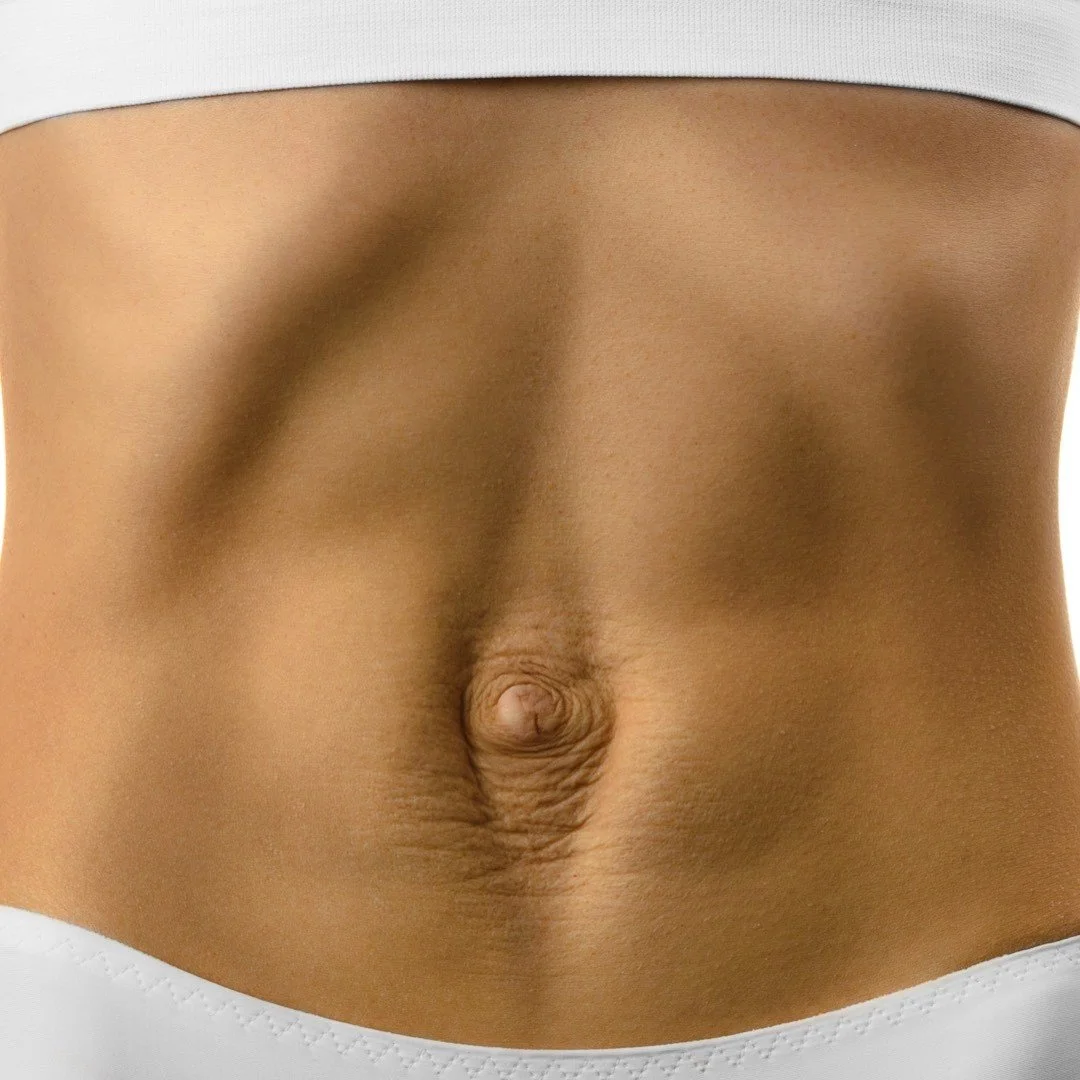What Even Is Diastasis Rectus Abdominus (DRA)?
First, a little anatomy. I’m sure you’re all aware of the rectus abdominus, or the 6-pack muscle. This is the most superficial abdominal muscle, and the easiest to see externally. This muscle is comprised of two muscle bellies separated by dense fascia (fascia is the white part you trim off of the chicken before cooking it) called the linea alba. DRA occurs when there is separation of the rectus abdominus at the linea alba. This separation most commonly occurs at the belly button, but will also occur 2 cm above and below the belly button.
DRA occurs most often in the third trimester and postpartum, but can also occur in babies/toddlers and men.
Everyone experiences a diastasis during the third trimester, and it does not close completely for almost 50% of moms after birth.
Though often discussed as a cosmetic issue (“mom pooch”), DRA also plays a role in function as the rectus abdominus is an integral part of the core. Other symptoms commonly present with DRA include low back pain, stress urinary incontinence, and pelvic organ prolapse.
How do you know if you have a diastasis? Coning or doming of the abdominal muscles will typically be present with exercise, or this is easily assessed (and treated) by a pelvic PT. Aside from low back pain, pain is not typically present with DRA. So if you’re experiencing abdominal pain, and have DRA, there is likely another structure that is causing your pain.
As far as treatment goes, specific and strategic exercises, as well as optimizing your breathing and functional movement patterns can close and heal diastasis. DRA is not something you have to live with!
To find out more about how pelvic PT can help, call 903-962-2600, follow @thepowerfulpelvis on Instagram, or learn more at www.txpelvichealth.com
To request an appointment, click here.

